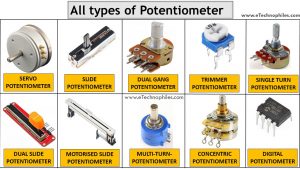Last updated on March 22nd, 2024 at 04:26 pm
A potentiometer is an electronic device that is meant to vary the potential difference between the desired terminals of a circuit. Depending on their application, there are different types of potentiometers viz, linear, rotary, analog, and digital potentiometers. Before diving a bit deep into their classification, let us see how they work.
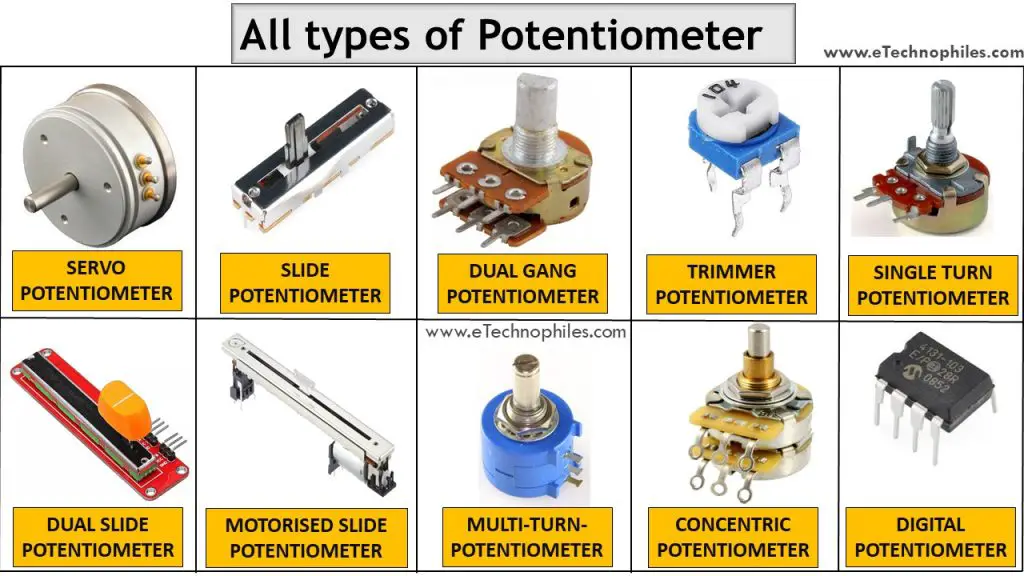
Table of Contents
How does a potentiometer work?
The variation of potential difference is achieved by gradually changing the resistance with a moving contact. Thus a potentiometer is also used as a variable resistance in some applications. Potentiometers are available in many types across the market. The suitable type is chosen based on its requirement in the circuit.
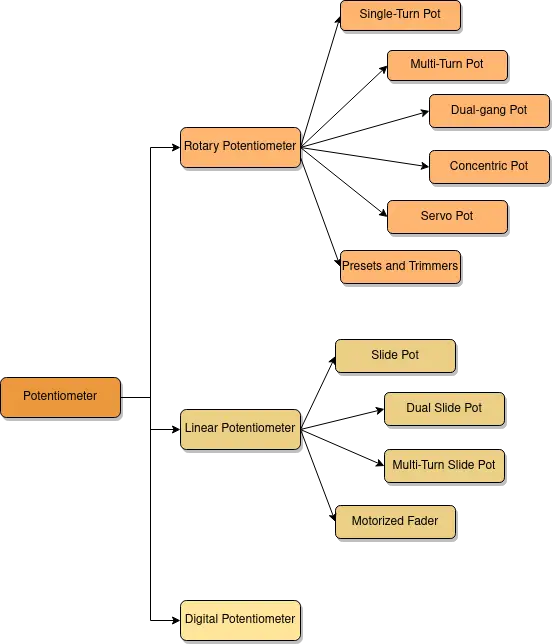
In all these types, the uniform resistance strip is the heart of the potentiometer. And they all follow a similar working principle. The rotary potentiometer is the most widely used among these and is a necessary component in the audio and stereo systems in the portion of volume control.
Linear potentiometers are commonly used to measure the internal resistance of a battery cell. Digital potentiometers are employed in situations that demand high precision.
What is a rotary potentiometer?
A rotary potentiometer has a rotational knob that controls the position of the wiper arm. The uniform resistance is in a semicircular structure, in which the wiper moves in a circular motion to vary the resistance. So in this way, the rotary motion of these potentiometers is converted into varying resistance.
These are the most widely used potentiometers in industries.
What are the pins of a rotary potentiometer?
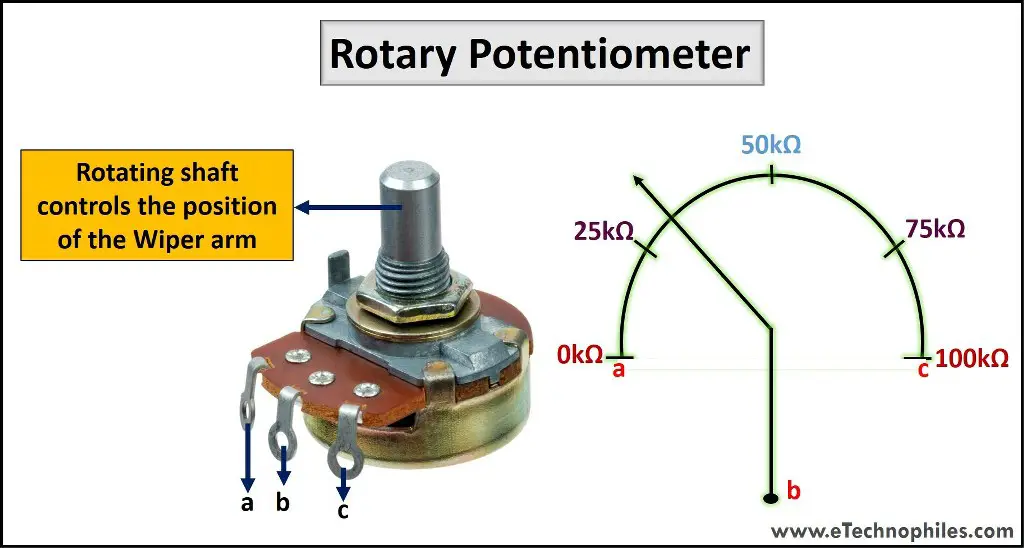
The above figure shows a rotary potentiometer with a circular structure and a rotating shaft that controls the supply voltage. This mechanism enables it to deliver adjustable supply voltage in the circuits.
Like every potentiometer, rotary potentiometers also have three pins among which pin 1 and pin 2 emerge from the uniform resistance, and pin 2 connects to the wiper that moves along the uniform resistance which is attached to the rotating shaft. The potentiometer output is taken from one of the pins at circular resistance and the pin at the wiper.
Where are rotary potentiometers mostly used?
- They are mostly used in applications where smooth voltage control is necessary. This is why these pots have a major role in the volume controller in radios.
- These are also used to adjust the battery charging voltage in the substation chargers.
What are the types of rotary potentiometers?
There are 6 types of Rotary potentiometers based on their purpose and applications. Each one of them is listed below:
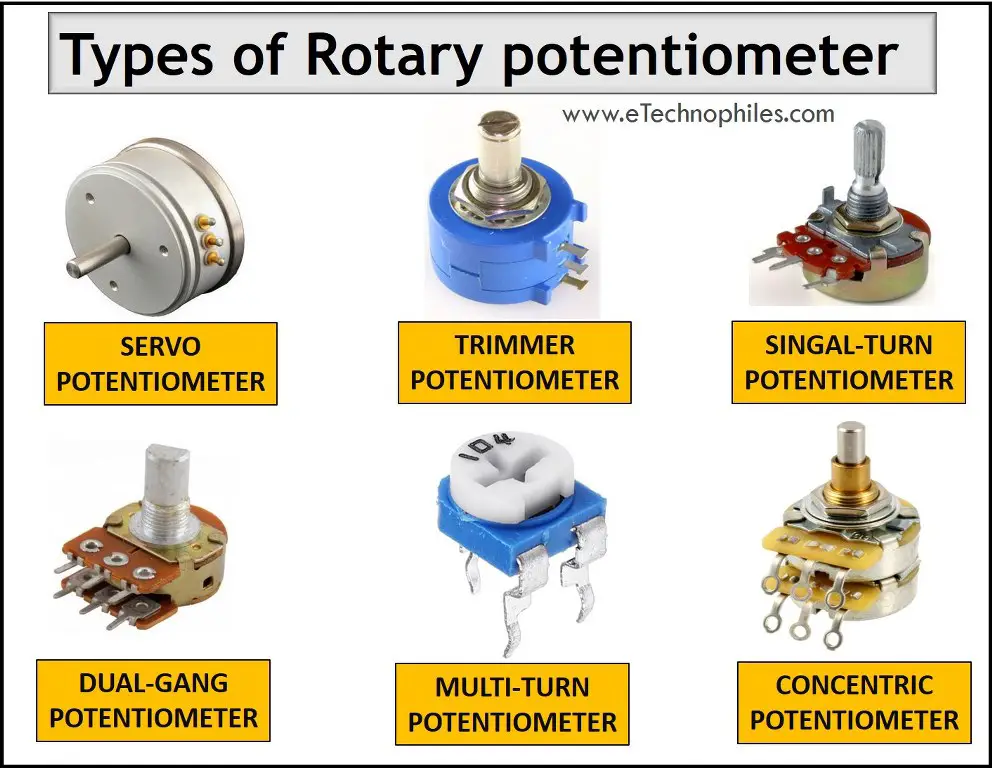
Single-Turn Pot
The single-turn pot can be rotated at its knob in a single direction. The rotation is possible at approximately up to 270 degrees, which is the 3/4th of a complete rotation. The figure below shows a single-turn potentiometer.
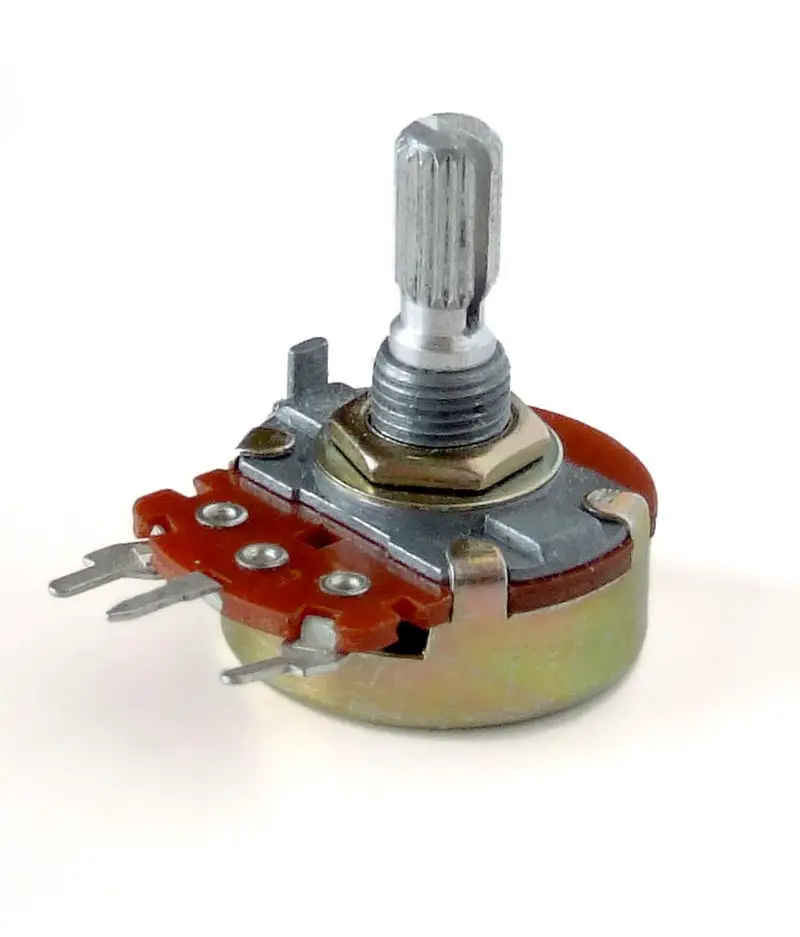
Applications
A single-turn pot is the most commonly used among all other potentiometers. These are usually used where a single rotation is enough to achieve adequate control resolution.
Multi-Turn Pot
The major difference between a multi-turn and a single-turn potentiometer is that multiple rotations are possible in this model(5,10 or 20). This results in enhanced precision as compared to the other type. Multi-turn pots are constructed using a wiper followed by a spiral or helix form.
Their construction is also achieved with worm gear. Bourns is the most popular manufacturer of multi-turn pots. We can see an example of a multi-turn pot in the following figure.
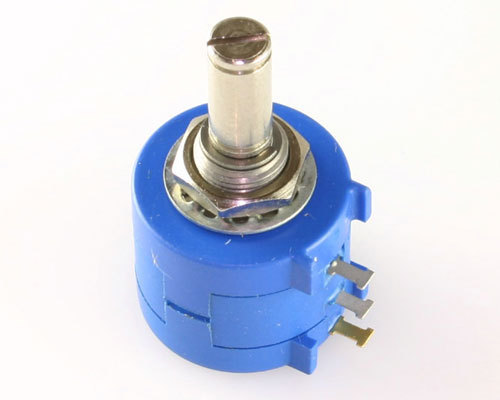
Applications
- The multi-turn pots are preferred over single-turn pots where more precision and accuracy are required.
- The worm-gear multi-turn pots are used in PCB as trimpots.
Dual-Gang Pot
Dual-gang pots consist of two single-turn potentiometers combined on a single shaft, which is shown in the following figure. These pots use two parallel channels to achieve dual functionality. Potentiometers with more than two gangs are available in the market but they are not very common.
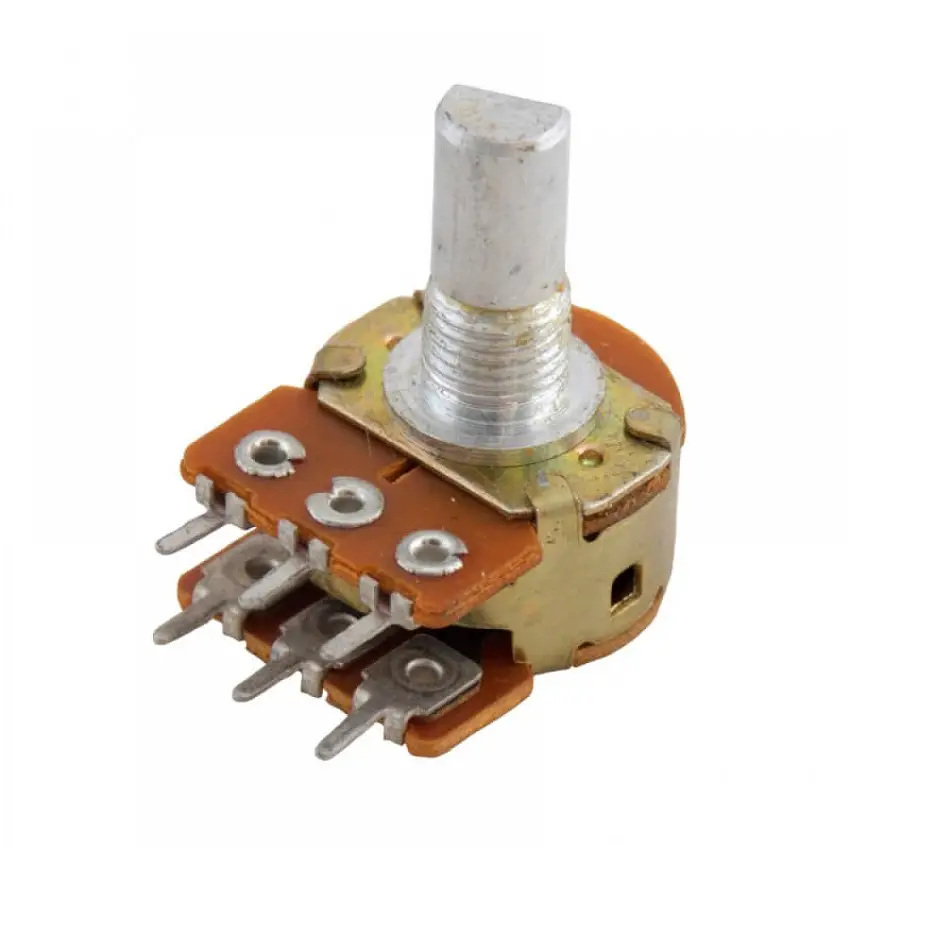
Applications
Since these potentiometers can serve parallelly for two channels, they are used in the applications where the potential difference between two channels should be parallelly adjusted. Thus the dual-gang pots are largely used for audio volume control in stereo systems.
Concentric Pot
A concentric pot is another type of dual potentiometer with two potentiometers. Unlike dual-gang pots that have single shafts, the resistance in concentric pots is individually adjusted using two concentric shafts. Thus this pot has two controls in a single unit. An example of a concentric pot is shown in the figure.
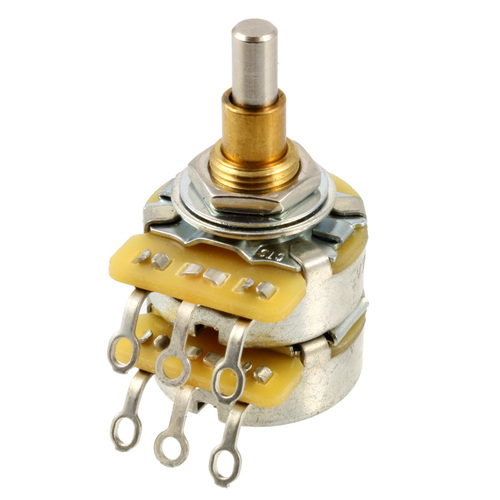
Applications
- Concentric pots are commonly used in audio systems where the volume and tone have to be controlled in a single unit.
- These are also used in the radios of old model cars.
Servo Pot
As its name specifies, servo potentiometers are used in servo motors. This pot can automatically adjust the supply voltage fed to it by mounting it on a servo motor. A servo pot is shown in the figure below.
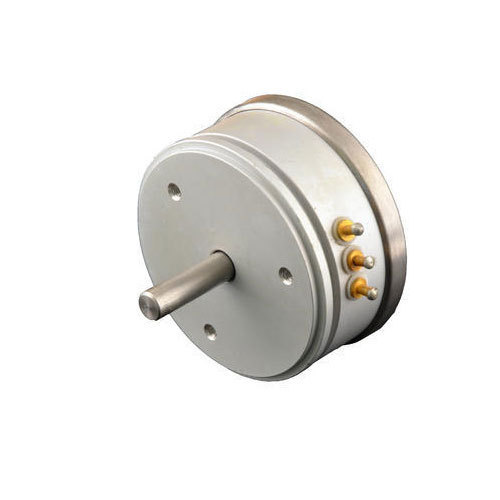
Applications
- The applications that require manual, as well as automatic adjustments, are fulfilled with servo pots.
- The audio equipment that adjusts volume with remote control uses servo pots.
Presets and Trimmers
These potentiometers are slightly different from the above discussed rotary potentiometers. This potentiometer is small, PCB friendly, and fixed in a circuit to make occasional adjustments. The resistive track in these pots is made of cement or carbon composition.
The rotary wiper adjustments can be done with a small-bladed screwdriver. A trimmer is shown in the figure below.
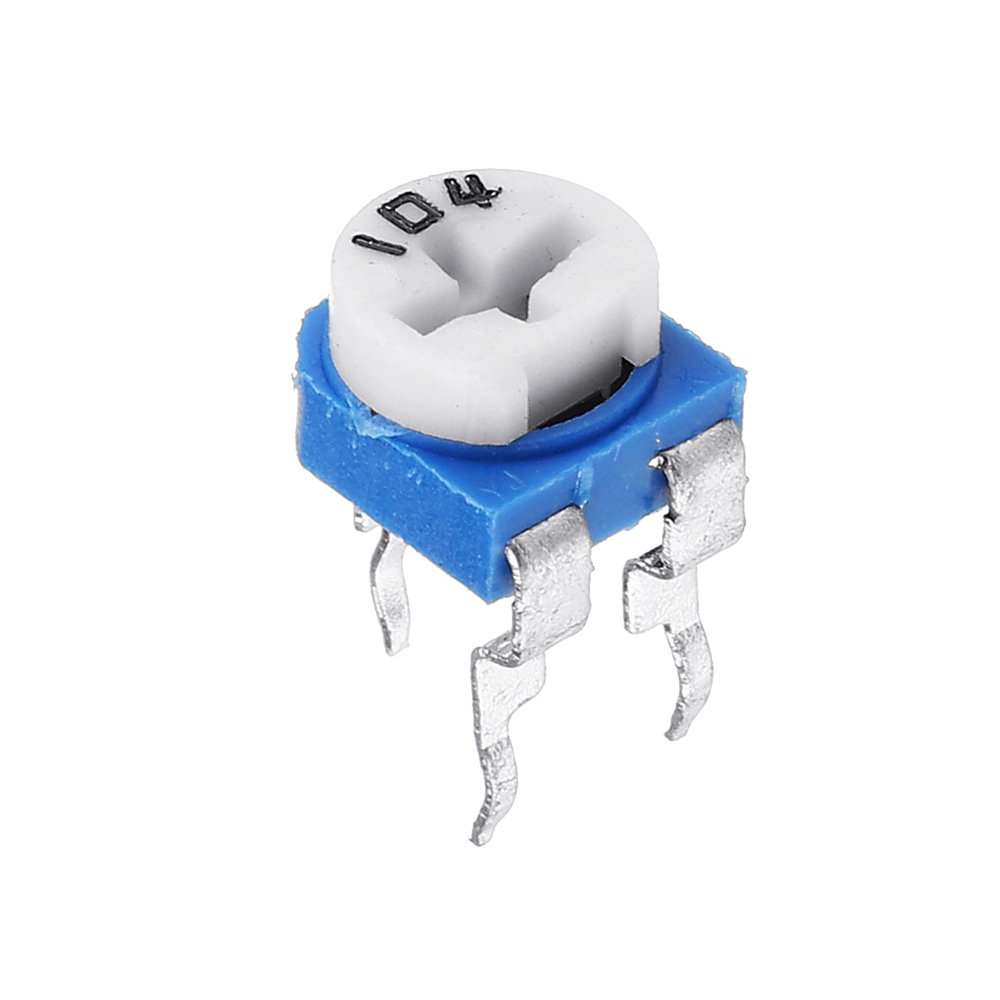
The biggest advantage of these pots is that they are small in size and are available at less cost. The trimmers are available as single turn as well as multi-turn types in which the lifespan usually ranges from 100 to 200 cycles.
The trimmers are called presets when they are used as variable resistors in the circuits. These rotary potentiometers are commonly available as mounted in a square package.
Applications
The trimmers are usually preferred in the cases of calibrations and tuning.
What is a linear potentiometer?
The linear potentiometers have a linear uniform resistance. Thus instead of a circular mechanism, linear potentiometers have a sliding contact for varying the resistance. The rest of the operations are similar to a rotary potentiometer.
As shown in the figure below, the two ends of uniform resistance are connected to the source voltage. And the output is collected from the slider and one end of the uniform resistor.
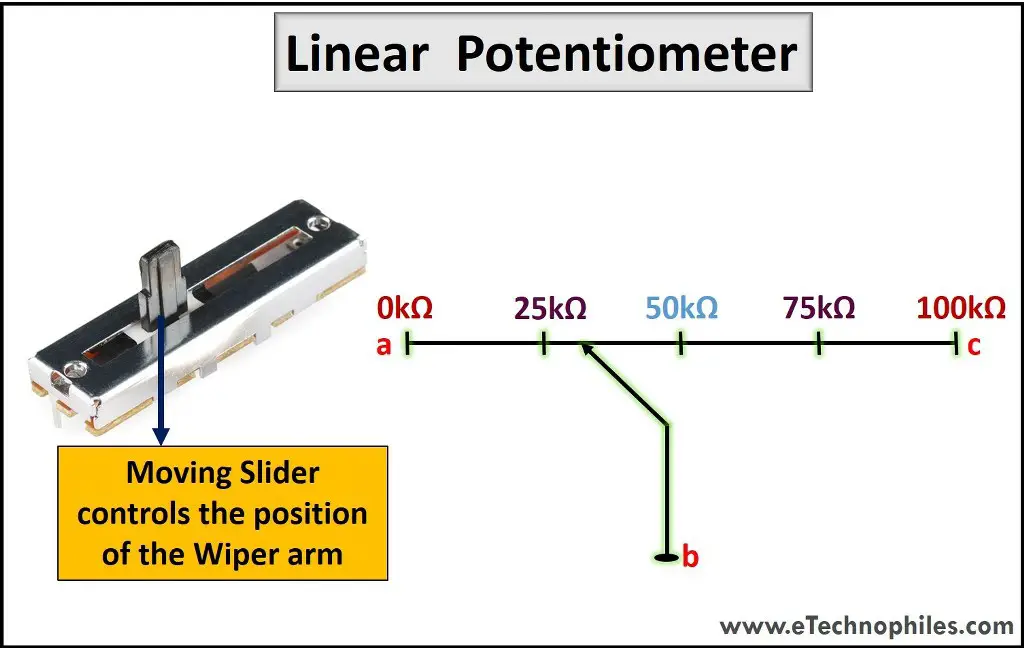
The linear potentiometer is preferred over rotary potentiometers in measuring the output voltage of a branch in the circuit. It is used to measure the resistance of a battery cell. It is also used for the comparison of voltage in a battery with the standard cell.
What are the types of linear potentiometers?
There are four types of linear potentiometers based on their applications: Slide, Dual side, Multi-turn slide, and Motorised fader potentiometer.
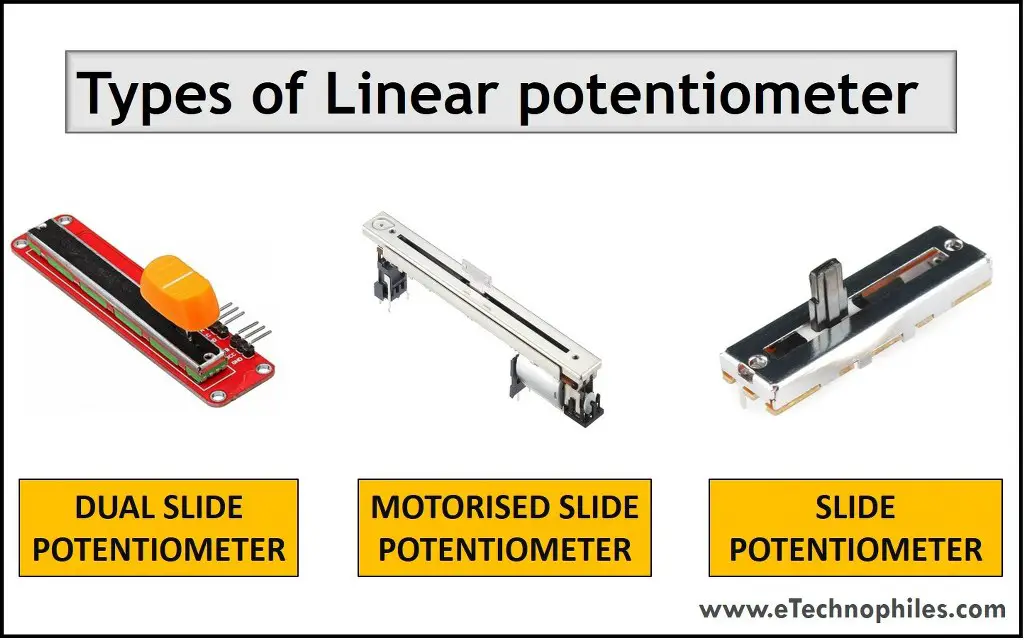
Slide Pot
Usually called faders, these potentiometers are linear sliders that are made from conductive plastic. As shown in the figure, this is the most common and simplest type of linear potentiometer.
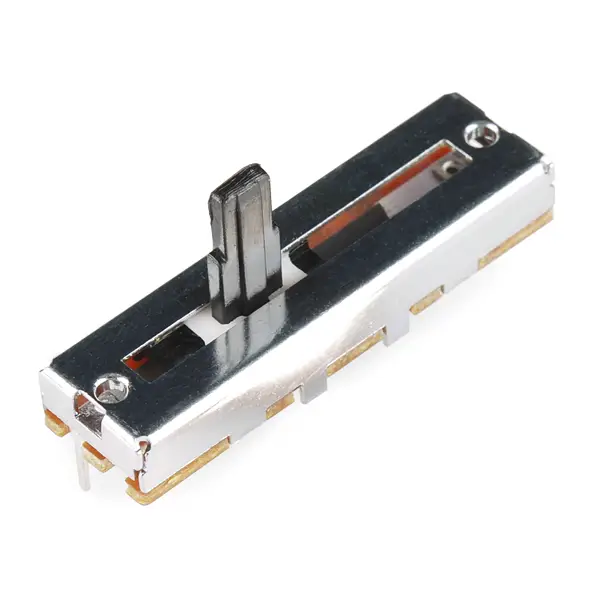
Applications
- Slide pots are commonly used for distance measurements.
- The single-channel control applications are satisfied using slide pots.
Dual Slide Pot
This is a type of slide pot that is embedded with two parallel potentiometers. They are thus used to control two channels simultaneously. The figure below shows a dual slide pot.
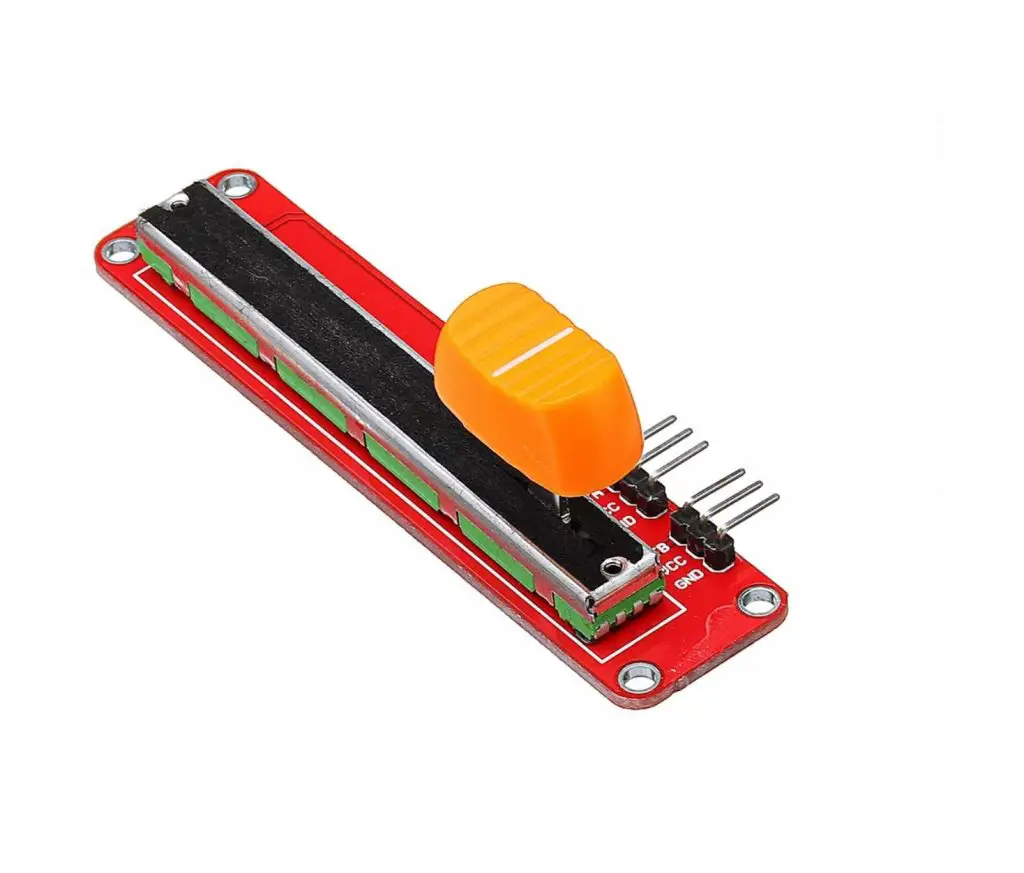
Applications
The dual slide pots are often used for stereo volume control so that two channels can be controlled parallelly.
Multi-Turn Slide
Multi-Turn Slide potentiometers support multiple rotations and hence, they are more precise. These are constructed from a spindle that actuates a linear potentiometer wiper.
Applications
Multi-turn slides are usually used for PCB as trimpots since it provides precise measurements and a good resolution.
Motorized Fader
The mechanism of servo pots in rotary potentiometers is similar to motorized fader in linear potentiometers. In both cases, the control is automatically adjusted by a servo motor embedded in the pots. The servo motor in the motorized fader is clearly visible in the figure below.
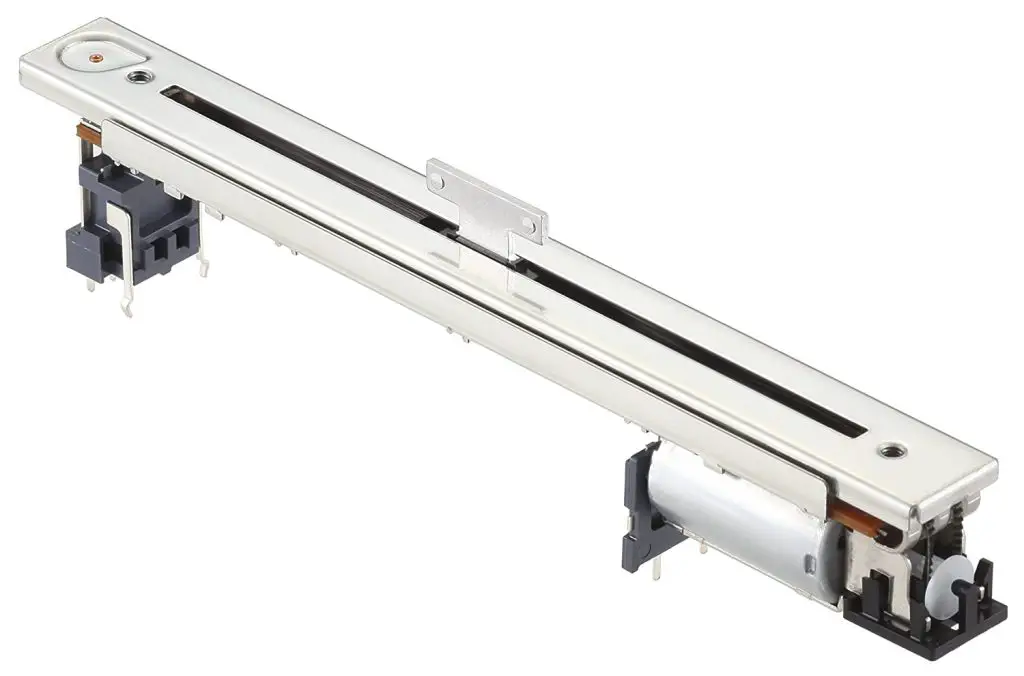
Applications
The motorized faders are often present in the audio mixers at studios where manual, as well as automatic adjustments, are required.
What are the limitations of an analog potentiometer?
Athough, analog potentiometers are widely used in industries, they have some limitations:
The linear and rotary potentiometers have a severe limitation of wear and tear due to the presence of movable parts. Apart from this, the other disadvantages of those potentiometers include resistance drift, larger size, sensitivity to vibration, wiper contamination, etc. Due to the big size, they may not be the right fit for small-size projects.
This might result in variation in the accuracy levels of these devices. All these limitations are well-compensated by digital pots.
What is a digital potentiometer?
The digital version of potentiometers is commonly known as a digital potentiometer. Digipots are operated electronically using signals and switches. Thus, there is no movable part involved. These are often constructed using resistance ladders as shown in the figure below.
These resistances are controlled by protocols like I2C and SPI. A virtual wiper version is accomplished in digipots using the switches assembled after every resistive element.
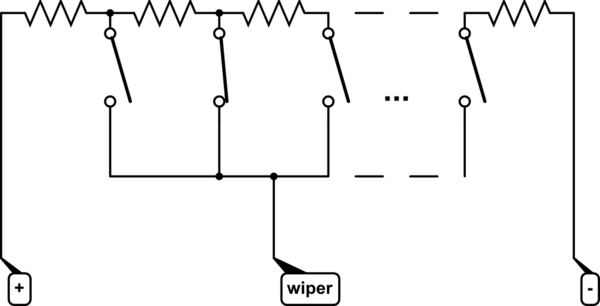
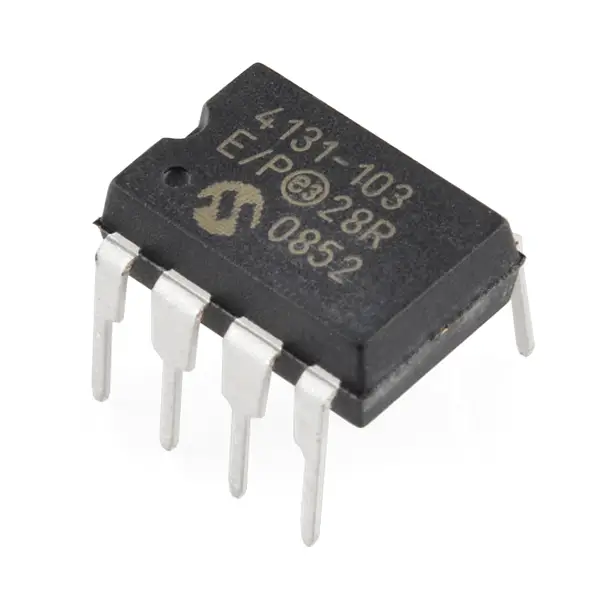
The greatest advantage of digipots is that they are capable of providing the most accurate measurements. The other advantages include low power dissipation, high reliability, and low resistance drift.
But there is a slight disadvantage of Digital potentiometers. The internal resistance of the digipot may vary due to temperature fluctuations.
Applications
- Like all other potentiometers, the digipots are widely used for volume control.
- Digipots in the circuit enables changing the offset voltage.
- They are also used for system calibration.
- The variable resistance in digipots is effective in tuning filters.
- Digitals potentiometers are used to control screen brightness.
